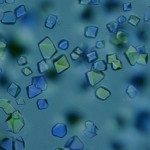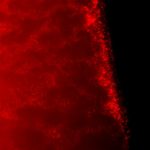Lien vers Pubmed [PMID] – 24061114
Acta Chim Slov 2011 Dec;58(4):671-7
Certain snake venom phospholipases A2 (PLA2) have been identified as specific, non-competitive blood coagulation inhibitors that bind with high affinity to human activated blood coagulation factor X (hFXa). Recent determination of the three-dimensional structures of PLA2 isoforms which differ in anticoagulant activity contributes to a better understanding of their mode of binding to human FXa. Detailed analysis of the crystal structures of natural PLA2 isoforms from Viperidae snake venom which differ in binding affinity to hFXa allows us to detect local conformational changes and precisely delineate the role of critical residues in the anticoagulant function of these PLA2. We find conformational changes at conserved position Lys127 and mutated position Lys128 > Glu in the C-terminal regions of less potent anticoagulant PLA2 (AtxC and CBa2), which contribute to the observed decrease in affinity for hFXa. The mutation His1 > Ser in less potent CBa2 is associated with a significant displacement of the side chain of Lys69 and Trp70 in the loop 65-72 and could also explain the reduced anticoagulant activity of the CBa2-FXa complex. Knowledge of the spatial arrangement of the sites of interaction of PLA2 with hFXa is important for understanding of the hemostatic process at the molecular level and could provide new anticoagulant drug leads.



